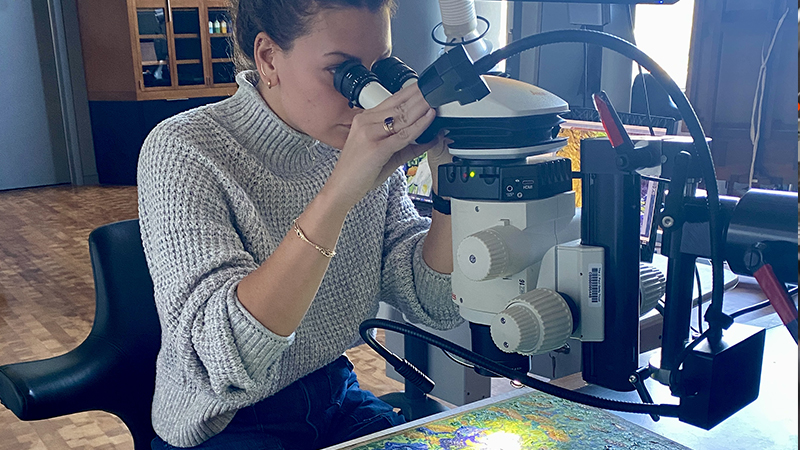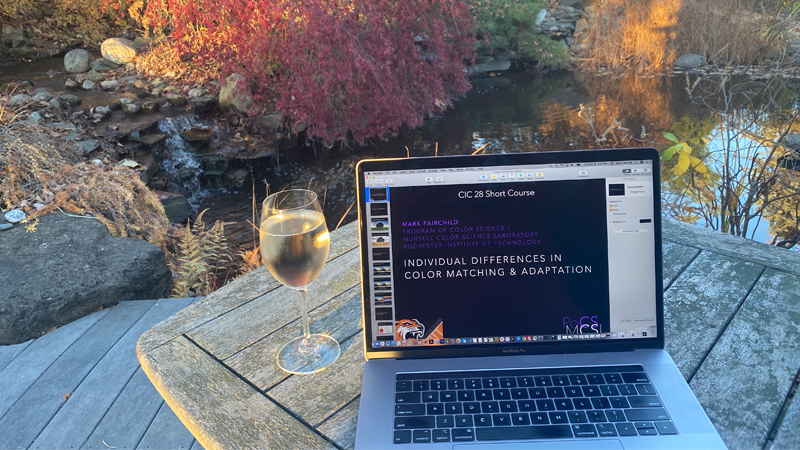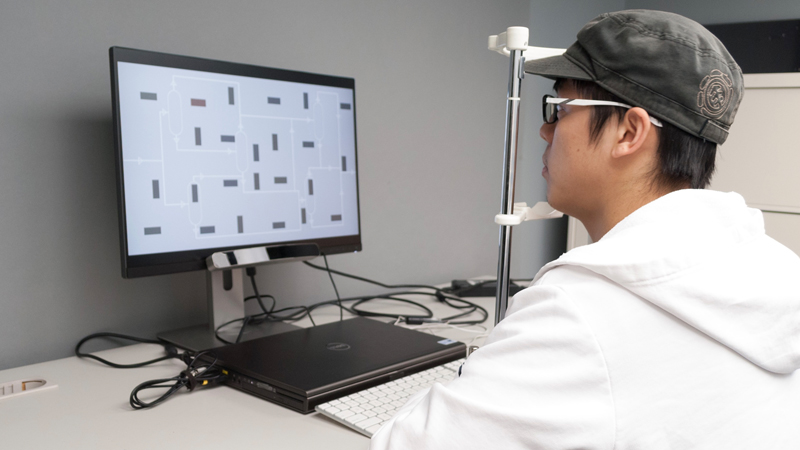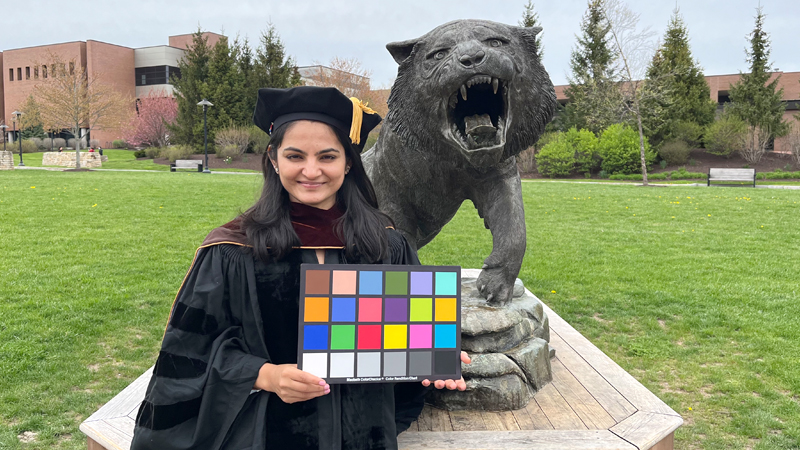Advancing Art Conservation Through Color Science
RIT's one-of-a-kind Color Science program launched Olivia Kuzio's journey to the Getty Conservation Institute, where she now applies high-tech tools to preserve priceless art.

Olivia Kuzio ‘23 never imagined that her fascination with historical artifacts would lead her to study color science at RIT. Yet this unique program - the only color science program in the United States - helped launch her exciting career in conservation science.
"I stumbled upon RIT's Program of Color Science while searching for graduate programs aligned with my interests in cultural heritage science," Olivia recalls. The program's innovative approach to studying heritage objects, such as paintings or historical letters, without invasive techniques captured her imagination.
At RIT, Olivia found more than just a rigorous academic program. She discovered a close-knit community and incredibly supportive faculty. "My instructors were so accessible and happy to support my diverse interests," Olivia shares. "Their willingness to support collaborations across the university and beyond made virtually any endeavor, whether academic or research related, attainable and exciting."
This support encouraged interdisciplinary studies. Olivia explains, "I was supported by my color science advisors in my desire to pursue an MS in chemistry concurrently with my Ph.D. in color science. This diversity of study would make me more competitive as a heritage scientist down the line in my career."
The program also emphasized real-world experiences. "Friends of mine pursuing doctoral degrees at other institutions were shocked when I would explain to them that I was not just 'allowed' to step outside my academic research to pursue opportunities like co-ops, but encouraged to by my incredibly supportive advisors and the larger graduate program at RIT," Olivia notes. These co-op experiences proved transformative. Internships at the Getty Conservation Institute and the Smithsonian Museum Conservation Institute opened doors to her future career. "These are the practical experiences that led to everything that's fallen into place for me since," she explains.
Today, Olivia works as an Assistant Scientist at the Getty Conservation Institute in Los Angeles. Her job is like being a high-tech detective for art. She uses advanced imaging techniques to study paintings and other artworks without ever touching them. One of her main tools is hyperspectral imaging, which captures information the human eye can't see.
"My projects center around imaging systems, with a focus on expanding the Institute's capabilities in hyperspectral imaging," Olivia explains. "I conduct technical studies on works of art to address questions of composition, artistic practice, and material degradation."
For students considering a similar career, Olivia offers this advice: "Say YES enthusiastically, and ask lots of questions. There are as many paths into this field as there are people working in it."
Reflecting on her journey, Olivia emphasizes the personal growth she experienced. "I'm deeply grateful for the personal growth that the relationships I developed during my graduate studies have inspired within me. They've motivated me to approach every interaction with openness, and to strive to foster attitudes of enthusiasm, patience, and understanding in all of the communities with which I engage."
Olivia's story is a testament to RIT's ability to prepare students for exciting careers at the intersection of science and art. It shows how a specialized program, supportive faculty, and hands-on experiences can lead to extraordinary opportunities in the world of cultural heritage conservation.








